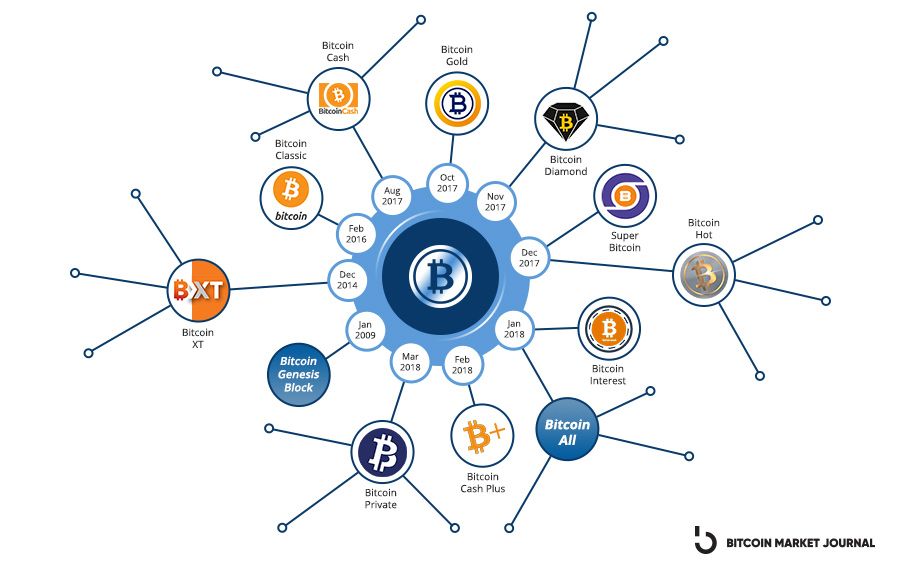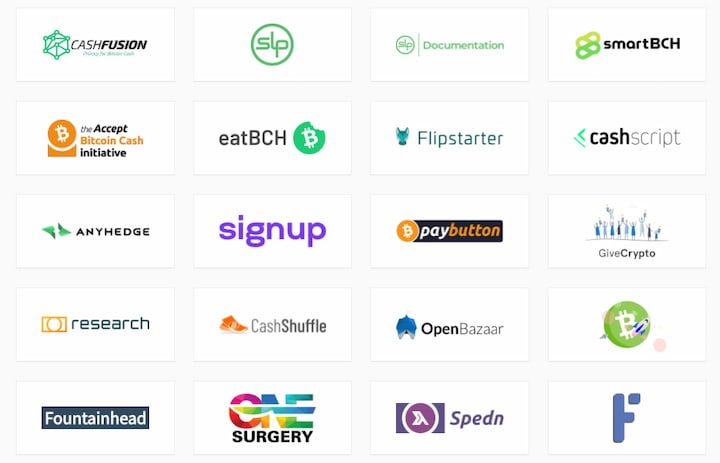Over the years, Bitcoin has had many hard forks - splits from the original network to create new cryptocurrencies. This article explains what are Bitcoin hard forks and highlights a few examples.
As the first cryptocurrency in existence, Bitcoin is still quite controversial. Not only does the project present a massive threat to the world's current financial system, but developers often disagree on how Bitcoin should move forward as a technology.
When developers in crypto disagree, not much gets done. That's because most blockchain networks require majority consensus to make any changes. So, what happens when too many developers disagree? They hard fork to a new cryptocurrency.
What Is A Bitcoin Hard Fork?
Put simply, a Bitcoin hard fork is when a blockchain network undergoes a significant change in the Bitcoin protocol and underlying technology moving forward, splitting the singular network into two differentiated and independent networks. As you may know, blocks on a blockchain hold transactions, which are essentially any form of data needing to be sent on said chain. In the case of a hard fork, a block is full of data and transactions that put these new protocols into effect.
Once that block is verified, users and nodes connected to the network need to update their client to abide by the new rules. Older clients will no longer work with that method, and therefore will continue to verify the other chain from the hard fork. Often, a hard fork takes place when the community cannot fully agree upon something like a consensus method or other major factor. This leads to the creation of a new cryptocurrency, which has its own address and wallet format that is different from a Bitcoin wallet address.
In the case of a network hard fork, we'll see the original network exist as its own, while the new one becomes a brand new project. No matter the fork, however, there will always be wallets such as Komodo Wallet to store these new currencies. With Komodo Wallet, one seed phrase is associated with your wallet's Bitcoin private key and various other private keys. your Bitcoin In many cases, a whole new wallet infrastructure is needed to support newly forked chains, and Komodo Wallet has everything in place to support any significant upgrades in the crypto market.
Types of Bitcoin Hard Forks
There are various types of Bitcoin hard forks, each with its own changes and implementations.
Bitcoin XT
Bitcoin XT is an interesting project. It was the first big Bitcoin fork. The creator, Mike Hearn, wanted to increase transaction speeds. To this day, Bitcoin struggles with an average of seven transactions per second. Hearn proposed an upgrade in block size from one megabyte to eight. This proposal resulted in the hard fork of Bitcoin XT.
The project lasted for a little bit, drawing a hardcore audience for a few months before it petered off. Bitcoin XT no longer exists, and Hearn has moved on to other projects.

Bitcoin Classic
While Bitcoin XT failed as a long-standing fork, there were other Bitcoin-focused developers that wanted to increase block sizes regardless. After all, block size is a significant talking point within the Bitcoin development community. This is where Bitcoin Classic came into play.
The idea of Bitcoin Classic was very similar to Bitcoin XT, but only increased block sizes to two megabytes instead of eight. Interestingly, this project is still around, but has nowhere near the support Bitcoin XT did at launch. It appears that developers and users have moved on to other projects for now.
Bitcoin Unlimited
Like the forks before it, Bitcoin Unlimited proposed to increase Bitcoin's block size to solve its scalability issues. However, the reason block sizes can't be increased indefinitely is the network becomes too big for nodes to download and store. Therefore, there needs to be a balance between block sizes and network storage sizes. Otherwise, there can't be any full nodes managed by everyday users, which dramatically impacts the decentralization and security of a network.
With Bitcoin Unlimited, developers planned for a sixteen megabyte block size. On top of that, it also aimed to provide miners with the ability to customize their block sizes. While this ideal was a little more novel than other forks, it wasn't enough to generate a dedicated following. The project still has a smaller team of committed developers, but that's about it.
Bitcoin Cash
The Bitcoin Cash hard fork is arguably the most successful break away from the original network. The project is often a top-10 cryptocurrency in terms of market cap, and that's largely due to the fact that it offers faster and cheaper transactions than Bitcoin, what the Bitcoin Cash community refers to as 'Bitcoin Core'.
Bitcoin Cash (BCH) was proposed as a response to the Segregated Witness controversy on Bitcoin Core. Essentially, SegWit removed some key transaction information to make each transaction smaller. Ideally, the network could fit more transactions into a block if they were smaller in size. Some didn't like that idea, which led to the Bitcoin Cash fork. BCH increases block sizes to eight megabytes, which is how it is cheaper and faster than Bitcoin, albeit sacrificing decentralization capabilities along the way.
On top of all that, Bitcoin Cash supports smart contracts, which enable Bitcoin Cash to work with more advanced protocols and functions not possible on the traditional Bitcoin network. While the smart contracts aren't as advanced as, say, Ethereum, Bitcoin Cash can still have its own decentralized finance applications and advancements. Bitcoin Cash can even support non-fungible tokens (NFTs).

Bitcoin Gold
Bitcoin Gold is another somewhat successful Bitcoin hard fork. While this fork is nowhere near Bitcoin Cash in terms of market cap position, it often hovers in the top 100 cryptocurrencies overall.
Bitcoin Gold differs from other networks in the way its proof-of-work consensus algorithm works. Thanks to the Equihash hashing algorithm, Bitcoin Gold is easier to mine with GPUs than cryptocurrencies on other networks. Bitcoin Core, for example, is mostly full of ASIC miners, which are specialized chips made exclusively for the SHA-256 hash algorithm. ASICs often run out competition since they are much more costly to operate than traditional GPUs.
In this way, Bitcoin Gold emphasizes its miners by making the network more accessible to all. Those with less powerful graphics cards can still participate in the network in a valuable way.
Conclusion
While there are countless other Bitcoin hard forks such as the Lightning Bitcoin hard fork, the ones listed above have impacted Bitcoin history in some way. Even so, the popularity of all of these networks combined doesn't even touch the original Bitcoin. It's impossible to predict which forks will remain standing, and only time will tell.
📧Komodo Newsletter
If you'd like to learn more about blockchain technology and keep up with Komodo's progress, subscribe to our newsletter. Begin your blockchain journey with Komodo today.

